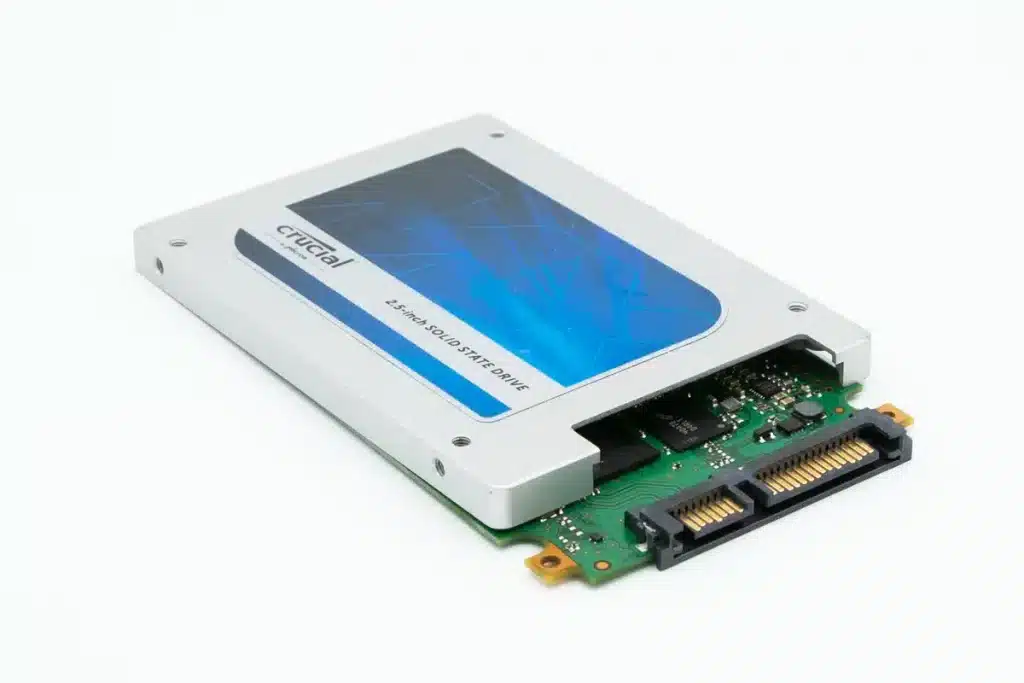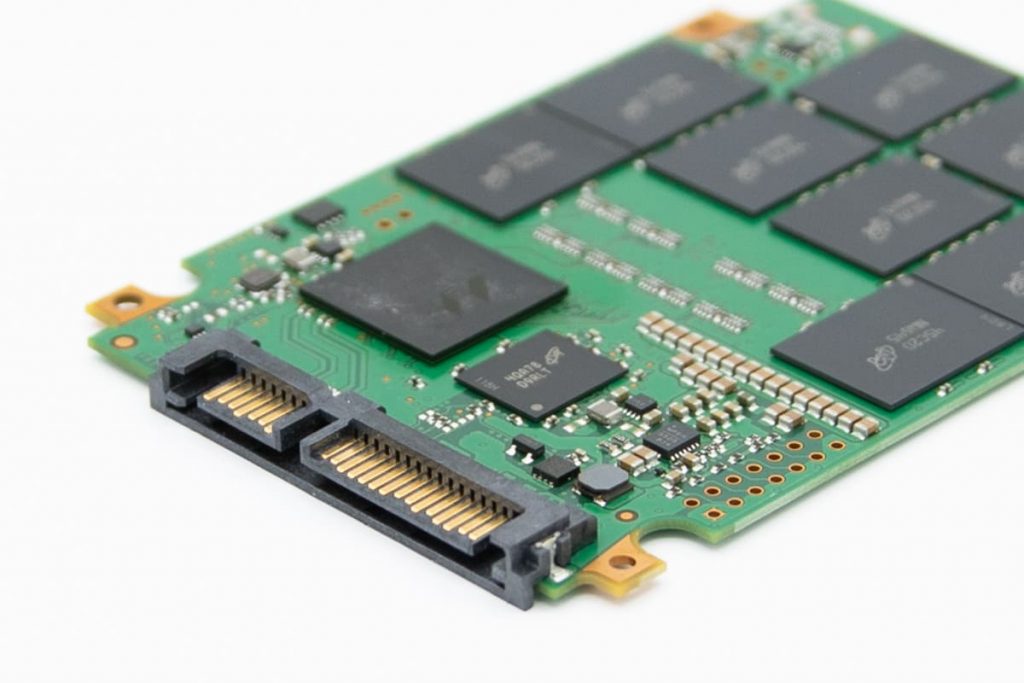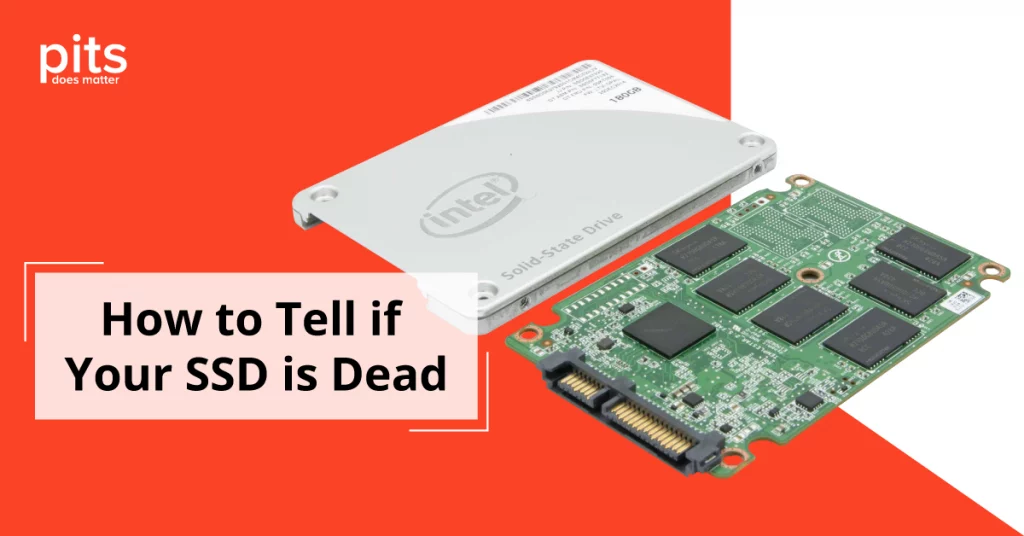Solid State Drives (SSDs) have revolutionized the world of data storage with their speed, reliability, and durability. However, just like any other technology, SSDs can fail, leaving you in a state of panic over your precious data.
In this comprehensive blog, we will explore the telltale signs of a dead SSD, whether a dead SSD can be fixed, and if your lost data can be recovered. At PITS Global Data Recovery Services, we are dedicated to helping you with your data loss woes.
Understanding SSDs and Data Loss
Solid State Drives (SSDs) represent a significant advancement in data storage technology. Unlike traditional Hard Disk Drives (HDDs) that rely on spinning disks, SSDs utilize NAND-based flash memory, which makes them faster and more reliable in general. However, SSDs are not immune to failures, and when they do fail, it can result in data loss.

Dead SSD vs. Failing SSD
Before we dive into how to tell if an SSD is dead, it is important to differentiate between a dead SSD and a failing one. A failing SSD may show warning signs that give you an opportunity to act before it is too late.
These signs can include slow performance, frequent error messages, or bad sectors on the drive. In contrast, a dead SSD typically will not respond at all, which can be more distressing.
How to Tell if Your SSD is Dead - Dead SSD Symptoms
Not Detected by the System
One of the most common and unmistakable symptoms of a dead SSD is that it is not detected by the computer’s operating system. When you connect the SSD to your computer, and it does not appear in the file explorer or Disk Management, this is a significant indicator of a dead SSD.
No Operating System Boot
Another critical indicator of a dead SSD is when your computer was running smoothly and suddenly can not boot the operating system from the SSD. This can lead to a situation where your computer refuses to start or loads a message like “Operating System Not Found.“
Unusual Sounds
SSDs are known for their silent operation, which sets them apart from the clicking and spinning sounds of traditional HDDs. If you start hearing unusual sounds like clicking or grinding when your SSD is in use, it is not a good sign. These sounds typically suggest physical damage to the storage device, such as a malfunctioning controller or damaged NAND chips.
Frequent Error Messages
Frequent error messages during normal usage or while trying to access files on the SSD can be indicative of a problem. These messages might include “I/O device error,” “Inaccessible Boot Device,” or “File not found.”
Bad Blocks and Corrupted Data
If you notice corrupted data, sudden crashes, or bad blocks on your SSD, it could be an early sign of impending failure. Bad sectors on an SSD can lead to data corruption, making it difficult to access your files.

No Response
When you try to access your SSD and it does not respond at all, even after multiple attempts, this could be a sign that it is dead. This lack of response might include the drive not spinning up (as is the case with HDDs) and no visible signs of activity.
Can Dead SSDs Be Fixed?
The unfortunate truth is that if an SSD is truly dead, it cannot be revived or fixed. Dead SSDs usually have suffered from a catastrophic failure, often because of a severe issue with the flash memory or controller. In such cases, the chances of data recovery are lower than with SSD failure situation. While technology continues to advance, the complexity and delicate nature of SSD components make it extremely challenging to resurrect a dead SSD.
However, there is a glimmer of hope if the issue is not catastrophic. If the SSD is showing signs of being unresponsive but has not suffered physical damage, there might still be a chance to recover your data. Professional data recovery services like PITS Global Data Recovery Services can perform a comprehensive assessment to determine the nature of the SSD failure and whether data recovery is feasible.
Professional Techniques for Dead SSD
Data recovery from a dead SSD can be a complex and delicate process, often requiring specialized equipment and expertise. At PITS Global Data Recovery Services, we specialize in retrieving data from seemingly dead SSDs, ensuring that your valuable information is not lost forever.
Our experienced technicians first evaluate the extent of the damage and the cause of the SSD failure. If it is a case of logical failure or firmware corruption, we can use advanced SSD data recovery methods to attempt to recover your data.
In more severe cases, such as physical damage or extensive corruption, we might need to work in a cleanroom environment to repair the SSD and retrieve the data.
How to Check if Your SSD is Dead
1. Check Connections
Ensure that the SSD is properly connected to your system. Sometimes, loose cables or connectors can mimic a dead SSD. Detach and reattach the SSD to eliminate this possibility.
2. Try Another System
If possible, connect the SSD to another computer to rule out system-specific issues. A different system might detect the SSD, indicating that the issue is related to your computer.
3. Check the BIOS/UEFI
Access your computer's BIOS/UEFI settings to see if the SSD is detected. If it is not, it might be a hardware issue. Sometimes, the SSD might not appear in the BIOS because of faulty cables or connectors.
4. Use Command Prompt
You can use the Windows Command Prompt to check if the SSD is recognized by your system. Open Command Prompt and type 'diskpart' to access the disk management tool. From there, you can list the disks to see if your SSD appears. If it is not detected, it is a strong indicator of SSD failure.
5. Seek Professional Help
If you have exhausted all these steps and still can not access your SSD, it is time to contact a professional data recovery service like PITS. We have the tools and expertise to assess the situation and determine if data recovery is possible. If the question "Can you recover data from dead SSD?" still stands, we will answer it.
Prevention and Best Practices
Regular Backups
Keep your important data backed up on an external device or cloud storage regularly. Regular backups are your best insurance against data loss.
Firmware Updates
Keep your SSD firmware up to date as manufacturers often release updates to address potential issues and improve overall reliability.

Avoid Overfilling
Do not fill your SSD to its maximum capacity. Overfilling can lead to increased wear and tear on the drive and a higher risk of data corruption.
Use Error Checking Tools
Regularly use built-in error-checking tools to identify and fix bad sectors and corruption on SSD. This can help you detect potential issues before they result in catastrophic SSD failure.
Avoid Physical Damage
Treat your SSD with care and avoid physical damage or shocks. SSDs are robust, but they are not indestructible, and physical damage can lead to data loss.
Monitor SSD Health
Utilize SSD health monitoring tools to keep an eye on the overall health of your drive. Many SSDs come with utilities that allow you to monitor their health, including the wear of NAND cells and other vital parameters.
A dead SSD is a distressing experience, but it is not necessarily the end of your data. While truly dead SSDs might not be recoverable, there is hope if the issue is less severe. If you suspect your SSD is dead, it is crucial to consult professionals like PITS Global Data Recovery Services, who have the expertise and equipment to assess the situation and attempt data recovery for SSD.
Remember, the best approach is always prevention. Regular backups and careful usage can go a long way in protecting your data from the potential of SSD failure. In any case, if you find yourself in a data loss crisis, do not hesitate to reach out to the experts at PITS for assistance in recovering your valuable information.
Your data is worth the effort to try and retrieve it, and we are here to help you every step of the way. We specialize in data recovery from dead SSDs, utilizing advanced techniques and state-of-the-art cleanroom facilities to maximize the chances of successful data retrieval. Your precious data is in safe hands with PITS Global Data Recovery Services.
Frequently Asked Questions
How to know if my SSD is dead?
Signs of a dead SSD include it not being detected by the system, the inability to boot the operating system, unusual sounds, frequent error messages, bad blocks, corrupted data, and a complete lack of response from the SSD.
Is fixing dead SSD possible?
If an SSD is truly dead because of a catastrophic failure, it cannot be fixed. However, if the issue is less severe, data recovery may be possible, and professional services like PITS Global can assess the situation and determine the chances of recovery.
What data recovery services does PITS provide for dead SSDs?
PITS Global Data Recovery Services offers a range of data recovery solutions for dead SSDs. Our services include assessment and diagnosis, logical and physical data recovery, data extraction and restoration, and preventive measures to avoid future data loss.
How can I prevent SSD failure and data loss?
To prevent SSD failure and data loss, regularly back up your data, keep firmware updated, avoid overfilling the SSD, use error checking tools, monitor SSD health, and protect your SSD from physical damage. These best practices can significantly reduce the risk of data loss.
